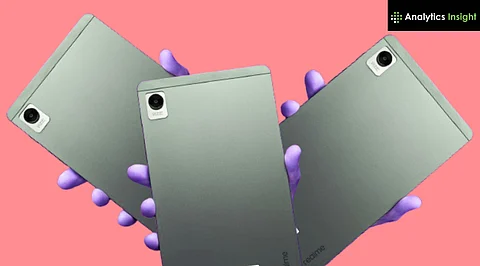

Gaming tablet market research reveals why Apple intentionally avoids features that Xiaomi embraces for competitive mobile gaming.
Price comparison analysis shows Xiaomi delivers flagship gaming features at a cost Apple charges for basic tablet functionality.
Industry insiders predict compact gaming tablets will force Apple to reconsider iPad Mini 7's conservative feature approach.
Compact tablets are making an unexpected comeback this year. Xiaomi prepares to challenge Apple's dominance with its new 8.8-inch Redmi K Pad gaming tablet. The device targets users seeking powerful performance in portable packages. This move directly confronts the recently launched iPad Mini 7.
The battle features fascinating contrasts between gaming-focused Android hardware and Apple's refined ecosystem approach. Tech enthusiasts watch closely as both companies push compact tablet boundaries. Different philosophies meet in this space where portability matters most.
Screen technology separates these tablets immediately. The device delivers an 8.8-inch LCD display with crisp 2560 x 1600 pixel resolution. More importantly, it offers up to 165Hz refresh rate for incredibly smooth gaming experiences. This high refresh rate transforms user interaction with content.
Apple takes a different approach with the iPad Mini 7. The 8.3-inch Liquid Retina display provides 2266 x 1488 resolution with excellent color accuracy. However, Apple maintains a standard 60Hz refresh rate. The company prioritizes color reproduction over raw refresh speed.
Build quality reflects each brand's philosophy. Xiaomi emphasizes gaming aesthetics through its metal unibody construction. Apple maintains its signature minimalist approach with clean lines and premium materials.
Raw processing power tells an interesting story here. Xiaomi equips its tablet with MediaTek's flagship Dimensity 9400+ chipset featuring eight cores. The configuration includes 16GB of RAM for handling multiple demanding applications simultaneously. This setup targets users who push devices to performance limits.
Apple chooses the proven A17 Pro chip for the iPad Mini 7. This processor excels in both single-core and multi-core tasks while maintaining energy efficiency. Apple pairs it with 8GB of RAM, which works seamlessly with iOS optimization.
Each approach serves its intended audience effectively. The Xiaomi tablet emphasizes sustained performance during gaming sessions. Apple prioritizes consistent performance across varied workloads.
Also Read: Xiaomi’s New 3nm Chip Outpaces All Samsung Exynos Processors
Gaming capabilities reveal the biggest philosophical divide. Xiaomi builds dedicated gaming features into every aspect of the Redmi K Pad. The device includes dual X-axis linear motors that provide precise haptic feedback during gameplay. Additionally, dual USB-C ports allow charging while gaming without cable interference.
The 67W fast charging system minimizes downtime between gaming sessions. The high refresh rate display eliminates motion blur during intense gaming moments.
Apple approaches gaming differently with the iPad Mini 7. The A17 Pro chip delivers console-quality performance for games like Resident Evil. However, Apple focuses on overall experience rather than specialized gaming hardware.
Operating systems create fundamentally different user experiences. The device runs Android 15 with HyperOS interface customizations. This combination provides extensive personalization options and direct access to Google Play Store's vast gaming library.
Apple delivers iPadOS 18 with integrated Apple Intelligence features on the iPad Mini 7. The system includes advanced AI capabilities like Writing Tools and Smart Script. These features work seamlessly across the Apple ecosystem.
Each approach serves different user preferences effectively. Android users appreciate customization freedom. Apple users value polish and consistent experience across devices.
Market positioning reveals each company's broader strategy. Xiaomi typically delivers flagship features at competitive price points, making advanced technology accessible to broader audiences. The Redmi K Pad continues this tradition by offering gaming-focused features without premium pricing penalties.
Apple maintains its premium positioning with the iPad Mini 7 starting at US$499 for 128GB storage. The company doubles base storage compared to the previous generation while keeping prices stable. Apple emphasizes long-term value through software support and ecosystem integration.
Value perception varies significantly based on individual priorities. Gaming enthusiasts may find Xiaomi's specialized features justify the investment. Creative professionals often prefer Apple's ecosystem benefits.
User demographics shape each tablet's design philosophy fundamentally. The device targets mobile gamers and Android enthusiasts who demand customization freedom. Gaming features appeal to competitive players and content creators.
Apple designs the iPad Mini 7 for creative professionals and ecosystem users primarily. Students benefit from seamless integration with MacBooks and iPhones. Artists appreciate Apple Pencil Pro support with advanced features like squeeze gestures.
Both tablets address the growing compact device segment effectively. Remote work trends and mobile entertainment consumption drive demand for powerful portable devices.
The compact tablet renaissance reflects broader industry trends toward specialized devices rather than one-size-fits-all solutions. The Chinese manufacturer demonstrates that Android tablets can compete effectively by focusing on specific user needs like gaming performance and customization. Apple maintains its strength through ecosystem integration and premium experience delivery.
This competition ultimately benefits consumers by driving innovation and providing meaningful choices in form factors that seemed forgotten. The market appears ready to support multiple approaches to compact computing, suggesting this category will continue evolving rapidly.
Also Read: Apple vs Google: 7 Features Apple Copied from Google
